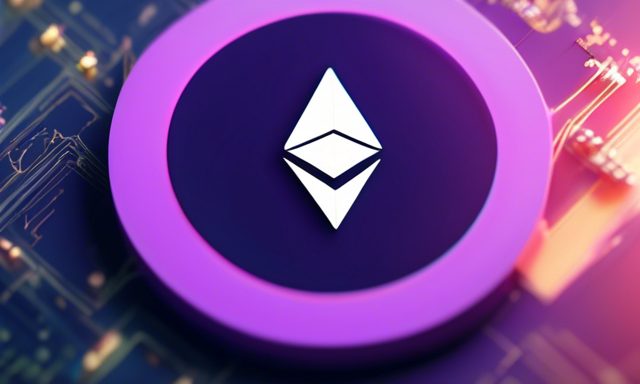Understanding Ethereum’s Shift to Inflation: Insights and Implications 🚀
The recent shift of Ethereum towards an inflationary model has stirred significant discussions among analysts and crypto enthusiasts. Contrary to traditional assumptions, three experts have shed light on how this development can enhance the utility of the Ethereum network. They discuss the potential challenges and positive aspects of this shift, particularly in relation to market sentiment and investor behavior.
Ethereum’s Inflation: A Double-Edged Sword ⚖️
This year, Ethereum, the second most prominent cryptocurrency after Bitcoin, has experienced a marked increase in its average daily supply. This uptick is anticipated to reach approximately $1.5 billion by the end of the year, spurred by a decrease in gas fees, the costs associated with executing transactions on the Ethereum blockchain. Data from Ultra Sound Money indicates that since April, Ethereum’s supply has risen by over 262,008 ETH, totaling around 120,326,493 ETH by early September.
The rising supply has led many to question Ethereum’s long-term stability and value, especially since it once benefited from deflationary characteristics. However, the analysts consulted have expressed a consensus that this inflation is not inherently damaging in the medium term. They stress that Ethereum’s emission strategy differs significantly from that of Bitcoin, which is structured around scarcity.
Sasha Ivanov, founder of the decentralized platform Waves, emphasized that Ethereum’s emission model aligns with its identity as a utility token, crucial to the decentralized finance (DeFi) ecosystem. Rather than hinging on the limitation of supply, Ethereum aims for long-term sustainability, ensuring that validators are consistently rewarded for their contributions to the network.
Encouraging Spending Behavior with Inflation 💸
Historically, Ethereum wasn’t always inflationary; the network transitioned to a more energy-efficient protocol in a shift known as “the Merge.” By March of this year, the influx of new tokens had decreased by over 452,000 ETH. However, the recent update to the Ethereum network, referred to as the “Dencun” upgrade, contributed to lower gas fees and reignited Ethereum’s inflationary cycle.
A portion of ETH is regularly destroyed—or “burned”—each day to manage supply. At present, the burn rate is considerably low due to decreased network fees following the Dencun update. For instance, only 7,380 ETH (valued around $17.7 million) were burned over a recent 30-day period compared to 77,632 ETH (worth approximately $186.3 million) issued within the same timeframe. Vitalik Buterin, Ethereum’s co-founder, lauded the Dencun upgrade for significantly reducing user fees.
Since the implementation of the upgrade, Ethereum’s supply has been growing at an average of 1,652 ETH daily. Projections suggest that the annual inflation could hover around 600,000 ETH, valued at $1.44 billion, yielding an inflation rate of about 0.7%. For comparison, Bitcoin’s inflation is around 0.8%, estimated at $20 billion annually. According to Shubh Varma, CEO of Hyblock Capital, this highlights a potential for Ethereum’s attributes to contribute positively to its ecosystem.
- Low and Stable Inflation:
- Encourages spending and utilization of ETH.
- Avoids value loss for holders.
Varma notes that lower transaction fees stemming from the Dencun update could foster inflation but simultaneously enhance the network’s appeal, supporting growth and demand. He asserts, “If network activity and growth surpass the inflation rate, the value of Ethereum can still rise.” This optimistic outlook reflects the belief that Ethereum’s economic activity can thrive despite inflationary pressures.
The Distinct Nature of Ethereum Compared to Bitcoin 🌐
The transition in Ethereum’s monetary policy signifies a profound evolution for the network. It challenges the conventional perspective of ETH as merely a value storage option. Instead, the true value of ETH lies in its functionality as a vital token within an active DeFi ecosystem. The success of Ethereum is more closely linked to the expansion and acceptance of its platform than its inherent scarcity.
As Ryan Lee from Bitget Research points out, scaling effectively through Layer 2 solutions is crucial for Ethereum while keeping its core value on the primary network. He warns that relying solely on Layer 2 developments without encouraging interaction on the main network may not yield optimal outcomes.
In periods of high network engagement, Ethereum operates in a quasi-deflationary manner due to its fee-burning mechanism. Still, this can lead to increased inflation rate pressures when the network is less utilized, presenting potential market challenges.
Hot Take: A Future Built on Utility, not Scarcity 🌟
The core of Ethereum’s future lies in its utility as a key component of a flourishing DeFi ecosystem, as emphasized by Ivanov. The long-term success of Ethereum depends on its ability to effectively leverage its inflationary mechanics to sustain and enhance its active network. Unlike Bitcoin, which pioneered the concept of peer-to-peer transactions, Ethereum ushered in a new era with its smart contracts and decentralized applications (dApps). These innovations have paved the way for groundbreaking financial products like NFTs, lending, and borrowing, demonstrating the platform’s versatility.
While Ethereum has seen fluctuations in the total value locked in its protocols—from a peak of $109 billion in November 2021 to around $44.6 billion presently—the network’s capacity to manage increased transaction volumes while reducing energy consumption remains fundamental to its evolution. The strategic updates led by Vitalik Buterin aim to position Ethereum as a resilient platform ready for mass cryptocurrency adoption.
In conclusion, Ethereum’s adaptive monetary policy represents both a challenge and opportunity. Investors and users alike must navigate the implications of its changing inflation model, which can sustain and even enhance the network’s growth in the long run.





 By
By

 By
By
 By
By
